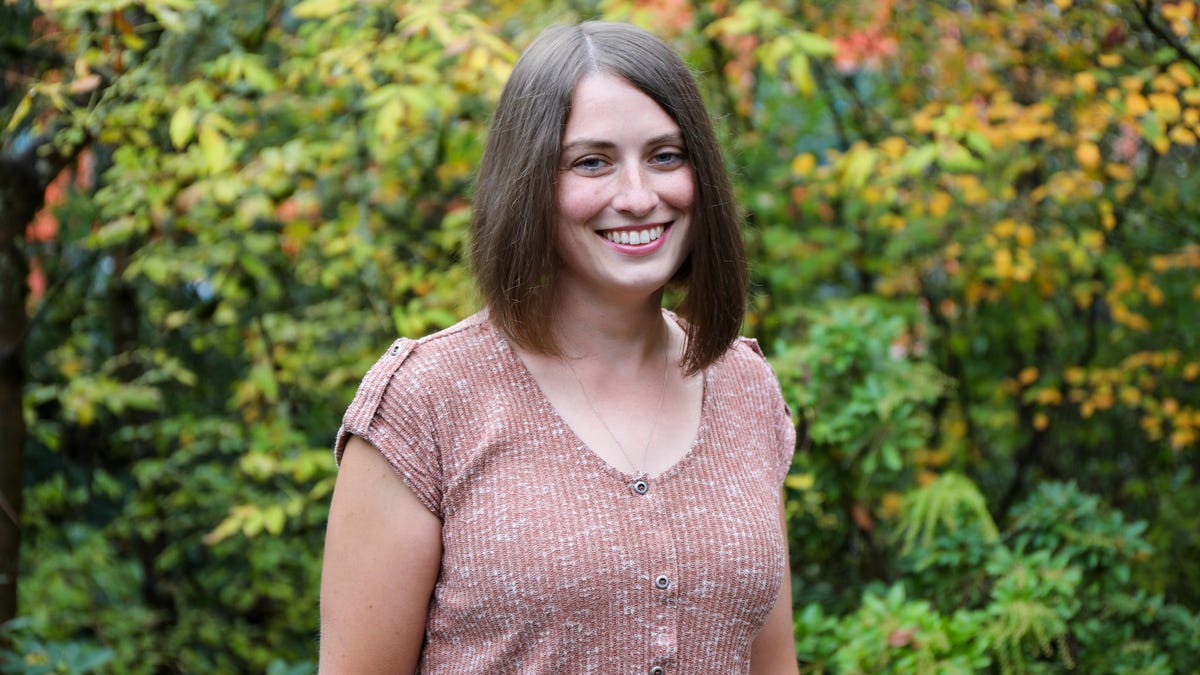
The brain of 34-year-old Amber Pearson contains a one-of-a-kind implant. The Oregon resident is the first person to have a deep brain stimulation device that manages both her epileptic seizures and her obsessive compulsive disorder symptoms. Her subsequent improvement has inspired scientists to conduct larger studies of the technology.
Pearson’s story was first detailed in a case report published last October in the journal Neuron, along with an accompanying article from Oregon Health & Science University, one of the institutions involved in her care.
Advertisement
Pearson began to see OHSU doctors for her epilepsy in 2016. But even after she received a surgery in 2018 that removed a small amount of brain tissue often tied to seizure activity, her epilepsy continued to plague her. She then agreed to undergo responsive neurostimulation (RNS), a form of deep brain stimulation where a specialized device is placed inside the brain. This device acts much like a pacemaker, first detecting bouts of erratic brain activity associated with neurological conditions like epilepsy, then sending a counteracting pulse of electrical stimulation to the brain.
Advertisement
Pearson then had a remarkable idea of her own, based on her research looking into the technology. Since the doctors were already going to use the device to control her epilepsy, could they also customize it to control her OCD at the same time? Deep brain stimulation is regularly used to treat epilepsy and has shown some promise as an option for treatment-resistant OCD. But prior to Pearson, no RBS device has ever been rigged to treat both at once. Her doctors agreed to the idea and tried to figure out how to do it.
Advertisement
The subsequent work involved the coordination of researchers from OHSU, UCLA, Stanford University, and the University of Pennsylvania. First, they monitored Pearson’s brain while she was exposed to OCD triggers, in order to figure out the exact pattern of erratic brain activity that the device was supposed to respond to. Then, the device was tweaked to separately react to both her epilepsy and OCD.
Pearson underwent the procedure in March 2019, and it appears to have been a clear success so far. And while her seizures are now better managed, the implant has more significantly relieved her suffering from OCD.
Advertisement
“Epilepsy brings limitations to my life, but OCD controlled it,” Pearson said in a statement from OHSU in October. “Before I started treatment with my RNS, I would wash my hands until they would bleed… My hands would be so dry that bending my fingers would crack the skin of my knuckles.”
University of Pennsylvania researchers are now working on a study to see if this technology can be expanded more widely to others with OCD (an estimated 2.5 million Americans are living with OCD, while around 40% to 60% are thought to not respond well to current treatments). And though Pearson’s OCD and seizures have not fully faded, her daily life has greatly improved.
Advertisement
“I’m happy again and excited to go out and live and be with my friends and my family,” she told the AFP this month.
Services Marketplace – Listings, Bookings & Reviews